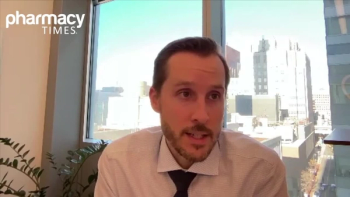
Next Generation Testing May Better Detect HIV Drug Resistance
Many conventional tests unable to detect resistance to antiretroviral drugs for HIV.
A next generation sequencing test can detect HIV drug resistance mutations that conventional tests are unable to identify, which could play a key role in helping optimize HIV treatment regimens, a recent study suggests.
In the past decade, the use of antiretroviral therapy to treat HIV has increased substantially. However, a concurrent increase in
To ensure that patients receive effective treatments, it is imperative to test for HIV drug resistance. Unfortunately, nearly all genetic sequencing tests for these mutations are no longer on the market, and only one commercial sequencing test from the early 2000s remains.
This sequencing test has older technology that is expensive, and can take 1 to 2 weeks to produce results. Furthermore, it has low sensitivity for drug resistance mutations that occur at a frequency below 15% to 20%.
In order to address this issue, researchers developed the first next-generation sequencing-based test, called the Sentosa SQ HIV-1 genotyping assay, which integrates automated sample processing and analysis with software for results reporting into a complete workflow. The test’s abilities were presented at the 68th AACC Annual Scientific Meeting & Clinical Lab Expo.
During the study, researchers looked to evaluate the efficacy of Sentosa by comparing its performance with a Sanger sequencing-based test that is no longer on the market, called the TruGene HIV-1 genotyping kit. Researchers tested 111 blood samples of HIV patients, using both tests to look for mutations in the virus protease and reverse transcriptase genes.
The results of the study showed that Sentosa was able to detect 100% of all drug resistant mutations in the protease gene, compared with 90.45% detected by the TruGene. Furthermore, Sentosa identified 98.16% of all drug resistant mutations in the reverse transcriptase gene, versus 74.48% by the TruGene.
Overall, the Sentosa was able to detect 130 total drug resistant mutations that were not found by the TruGene, while TruGene was only to detect 8 drug resistant mutations that the Sentosa missed, according to the study. Sentosa was also able to detect drug resistant mutations in the HIV integrase gene, which is increasing in importance in the United States as a potential drug target.
As far as the amount of time it takes to produce test results, the Sentosa only took 2.5 days, allowing patients to receive treatment much faster than with the Sanger sequencing testing, according to the study.
“To our knowledge, nobody else has developed an assay like this,” said lead researcher Gerd Michel, PhD. “Now we have the opportunity to do HIV drug resistance testing much faster, at a lower cost, and also to test for mutations that are not visible with Sanger sequencing. The impact of these mutations that have not been seen by Sanger is not known yet. But now we have the tools to detect them so that researchers can determine how relevant they are clinically and physicians can determine if there should be a change in treatment.”
According to Vela Diagnostics, they expect to begin making the test available this summer.
Newsletter
Stay informed on drug updates, treatment guidelines, and pharmacy practice trends—subscribe to Pharmacy Times for weekly clinical insights.














































































































































































































